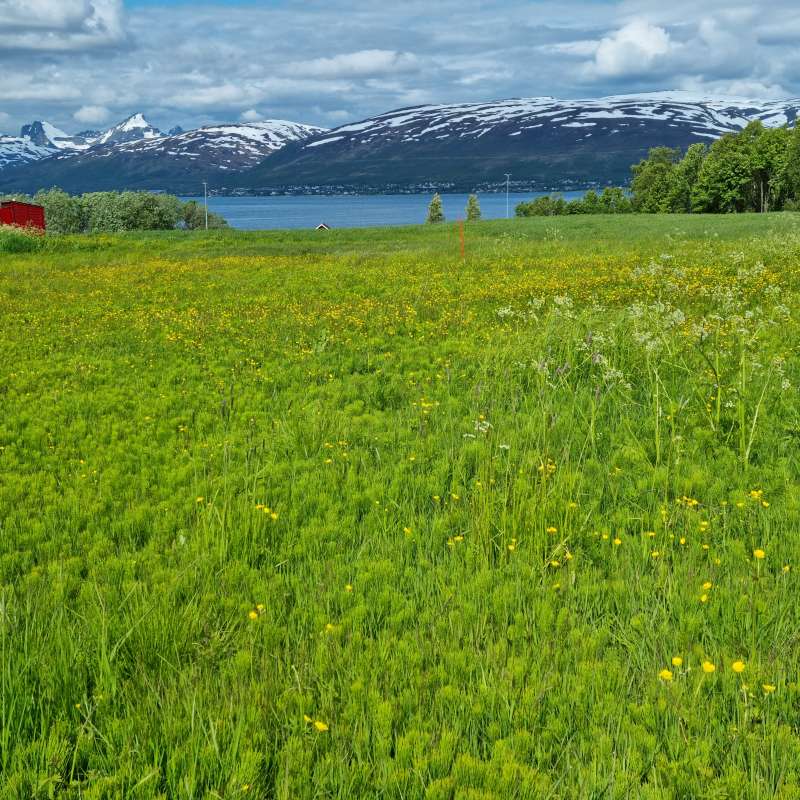Jutta Kapfer
Forsker
Forfattere
Petteri Kiilunen Tuija Maliniemi Janne Alahuhta John-Arvid Grytnes Risto Virtanen Kari Anne Bråthen Konsta Happonen Jutta Kapfer Lauralotta Muurinen Maria Tuomi Terhi Ala‐HulkkoSammendrag
ABSTRACT The composition of high‐latitude plant communities has changed over the past decades in response to several global change drivers. However, less is known about how these compositional long‐term changes are reflected in the total cover of plant species that do or do not interact with pollinators. Using species‐specific indicator values for pollinator dependence and nectar production, we provide empirical evidence on how compositional changes in vascular plant communities over the past 50 years are reflected in the cover of pollinator‐dependent and pollinator‐independent plants, as well as the cover of pollen‐ and nectar‐rewarding and non‐nectar plants, in two ecosystems in northern Fennoscandia. We show that the average cover of pollinator‐independent plants greatly increased in both tundra and herb‐rich forest communities over time. Average cover of pollinator‐dependent plants slightly increased in tundra but decreased in herb‐rich forests. The average cover of pollen‐nectar plants increased in the tundra but decreased in herb‐rich forests over time. At the same time, the cover of non‐nectar plants increased in both ecosystems. The observed changes were strongly driven by the increased cover of evergreen dwarf shrubs in the tundra and the decline of forb cover in herb‐rich forests. The observed changes were comparable between sites that had been disturbed by human land use and sites that remained in a natural or semi‐natural state. Our results suggest that, in terms of average plant coverage, high‐latitude plant communities have broadly become less dependent on insect pollination over the past 50 years. By documenting long‐term changes in the pollination strategies of high‐latitude plant communities, our study underscores the need to explore how shifts in plant community composition are linked to pollination processes and broader plant–pollinator dynamics. We highlight patterns that warrant further investigation and offer perspectives for future research on plant–pollinator interactions in northern ecosystems under global change.
Forfattere
Tuija Maliniemi Petteri Kiilunen Kari Anne Bråthen Jutta Kapfer Torunn Bockelie Rosendal John-Arvid Grytnes Patrick Saccone Risto VirtanenSammendrag
Boreal and tundra plant communities are expected to change in biodiversity due to increasing global change pressures such as climate warming. One long‐term scenario is increasing compositional similarity, i.e. biotic homogenization, which has been relatively little studied in high‐latitude plant communities. Here, we study how the composition and diversity of heathland and tundra plant communities have changed in northern Fennoscandia over several decades. In 2013–2023, we resurveyed 275 historic vegetation plots, originally surveyed in 1964–1975, with percentage covers for vascular plant, bryophyte and lichen species. We analyzed temporal changes in community composition and diversity across the study area and in different biogeographic zones, continentality‐humidity classes and habitat types. We found a strong homogenization trend across the study area, with plant communities becoming more similar in composition over the decades when all taxa were treated together. The observed homogenization was driven especially by the increased similarity of vascular plant and lichen communities and was largely independent of biogeographic zones or continentality‐humidity gradient. Homogenization was particularly associated with the drastic encroachment of the evergreen dwarf shrub Empetrum nigrum in habitat types originally dominated by other species, and with the decrease in lichen cover. In general, our findings suggest that Fennoscandian heathland and tundra vegetation is transforming towards a more homogeneous evergreen dwarf shrub‐dominated system, which may threaten ecosystem multifunctionality. Our results highlight the importance of exploring biodiversity among different metrics and growth forms to understand the overall changes in heathland and tundra biodiversity.
Forfattere
Jutta KapferSammendrag
Det er ikke registrert sammendrag

